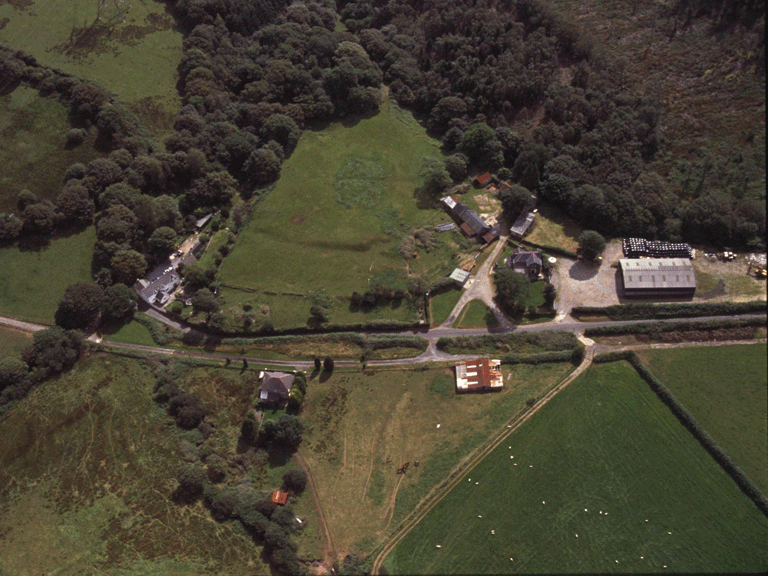Margam Mountain
012 Nant y Gadlys and Nant Bryncynan

HLCA 012 Nant y Gadlys and Nant Bryncynan
Ancient and other broadleafed woodland; medieval/post-medieval agricultural settlement/fields; post-medieval vernacular buildings; industrial (milling) archaeology. Back to Map
Historic Background
The historic landscape area of Nant y Gadlys and Nant Bryncynan is a complex of wooded stream valleys associated with the Gadlys estate. Located within the area is Gadlys; the gentry house at centre of the estate, dating from between the 16th and 18th centuries. The house belongs to the Renaissance group: central stair-passage type with gable-entry stone stairs (without outshut), broach stops on ceilings beams, thatched roof, and bakehouse. Documentary references indicate the existence near Gadlys Farm of a chapel (and associated cemetery) dedicated to the early medieval Welsh Saint, St Illtud (Ylltit), and a holywell at Gilfach-isaf during the medieval period.
Nant y Gadlys contains a network of leats and other remains associated with the area's past use for milling, the factory known as the Gadlys is mentioned in the Margam charters as Tal-y-Fedw; the grist mill at Tal-y-Fedw, Cwmfelin, appearing in the early Margam manuscripts. The corn mill is mentioned in several 16th and 17th century manorial surveys (the only mill recorded for the manor until 1689). One survey dated 1666, indicated one 'Welsh acre' of underwoods and rough grazing went with the mill. By the 19th century the site was in use as a flannel/woollen mill, abandoned and partly destroyed by its proprietor, John Joseph, during the 1840s, it was later adapted for use as a brewery and subsequently as a chemical works for a time. Later the site was returned to woollen production when John Jones, owner of the Cwmfelin woollen factory relocated his plant to Tal-y-Fedw, following agreement with the Llwydarth Tinplate Co. The factory appears to have closed during the 1920s and was in ruin by 1949 (Richards, B 1989).
Historic Landscape Characteristics
Nant y Gadlys and Nant Bryncynan is characterised as an area of surviving Ancient Woodland with other broadleafed woodland within deeply entrenched stream valley. The character of the area, which lies at the heart of the Gadlys Estate, is largely dependant on its post-medieval agricultural fieldscape and associated scatter of vernacular buildings. An important characteristic element of this landscape is in the form of industrial archaeological remains associated in particular with corn milling, and later the woollen industry; features include millraces. Other landscape features include the area's network of footpaths and tracks.